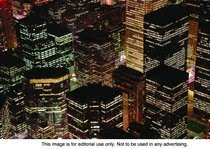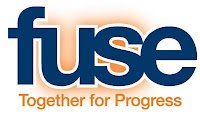
While Marshall McLuhan may have anticipated today’s credo – the medium is the message, and that message is as vapid as the empty calories we eat – thousands in the green movement, and more specifically the healthy food wave, believe that talking, writing and broadcasting the right information when it comes to nutrition and food security is the only way toward real change.
Ya gotta read a lot and listen to in-depth stuff to get the information.
For Melinda Hemmelgarn — dubbing herself the Food Sleuth — the reality is most people gain nutrition and health information from traditional media, which is bought and paid for by purveyors of agri-business and monopolies destined to put organic and sustainable farming out of business.
Take corn pushers, for example:
“Maybe you were beginning to believe that high-fructose corn syrup wasn’t so bad,” Hemmelgarn said. “After all, it meets the U.S. Food and Drug Administration’s definition of ‘natural,’ and isn’t it OK to eat all foods in moderation?”
She stressed that one 20-ounce soda gives the “consumer” 17 teaspoons of HFCS, while the American Medical Association recommends limiting all added sweeteners to eight or less teaspoons per day per person.
The media is supported by corn – it’s injected into all the foods sold in grocery stores, all sodas peddled on TV, and all the fast-food chains barking at us in print and TV ads depend on cooked-up corn mash.
Think salad dressings, baked goods, jams, dairy products, and cereals as deliverers of that dreaded product.
As of September 2010, corn refiners of America – think more than 95 million acres of U.S. soil planted in corn, hundreds of millions of pounds of weed and bug killer, millions of tons of nitrogen fertilizer, and think Genetically Modified kernels – are demanding that that lab-created HFCSs be re-labeled as the more natural term “corn sugar.”
Hemmelgarn’s work as a food and nutrition communicator, her columns for KOPN FM out of Missouri and her blogging for Organic Valley, as well as her membership in many organizations, including the Association for Health Care Journalists, give her a unique perspective on how public health and sustainable food systems are closely tied to the message the average person receives.
So-called “corn sugar” now is being implicated in a study showing some samples of HFCS contain the neurotoxin mercury, as a result of a process using mercury-grade caustic soda to separate corn starch from the kernel.
“But here’s where the story gets sticky, not to use a pun,” she said, “Back in 2004, under the direction of environmental health officer Renee Dufault, researchers found detectable levels of mercury in nine out of 20 samples of HFCS. However, FDA ignored the results, and journals didn’t print the story … until now.” [see Jan. 26, 2009 issue of Environmental Health]
So much now is being written – by journalists and some medical journals – that diet can and should be part of a treatment regimen for people (mostly children) diagnosed with autism in its various iterations and severities. There’s plenty of information in the non-mainstream media on mercury toxicity in apex fish and the limits pregnant women should put on eating those ocean species (see Monterey Bay Aquarium’s seafood guide and mercury studies, and the movie, The Cove, for more on these topics).
“Now the Corn Refiners Association says the Environmental Health article is outdated and HFCS manufacturers ‘stopped using’ mercury in HFCS production ‘years ago,’” Hemmelgarn wrote in a Columbia Daily Tribune article.
The Food Sleuth uncovered more hypocrisy, or subterfuge: a 2008 Institute of Agriculture and Trade Policy regional study confirmed Dufault’s findings after testing 55 name-brand food and drink products where HFCS was the first or second highest ingredient. “They found mercury in nearly one in three of the tested samples.”
Negotiating the superhighway of multi-million advertising budgets is more and more difficult these days for what marketers call us – consumers, targets, market groups, or, as P.T. Barnum so quickly impugned, “There’s a sucker born every minute.”
How much for those Super Bowl HFCS 30-second ads by Denny’s, Coke, Pepsi, Pedigree Dog Food, Frito Lay? $3 million a pop. Melinda showed 100 dieticians and nutritionists this new alphabet – a through z, all letters from recognizable brands. Most of the participants got 26 out of 26. Take the quiz here:
The point of Melinda Hemmelgarn’s message is that the war against bad food and bad food policy is on the marketing front, on the word game. She started off her life decades ago wanting to study art, but while in Florence, Italy, she stumbled on a nutrition class.
Her interview with me on KYRS, www.kyrs.org, in September 2010 covered many areas tied to the food crisis and genetically engineered foods, and the battle for truth in advertising as Big Food is trying to stop GMO-free labeling.
The entire gamut of how organic farmers and sustainable producers have been planted an uneven playing field from which to bless eaters with their safe and sustainable bounty was covered. While she’s a registered dietician holding a masters degree as a public nutrition policy specialist, Hemmelgarn is on the warpath against the stacked cards that have been dealt the American eater.
“Most of us, and I’m including dieticians with the larger group of citizens in our country, don’t question where our food comes from. If I were to generalize, I would say the larger proportion of dieticians probably haven’t thought that much about it.”
She’s quick to attack McDonald’s programs that have McTeacher’s nights, which get parents to bring kids to schools and buy loads of “McTrash,” and then some of the sales go back to the school. Not philanthropy but marketing.
Heart-clogging hucksterism in many minds.
“I guess the reason I feel so strongly about this area is because consumerism robs our children of their innocence. It makes them want products more than the things that are really valuable in life like relationships and spending time in nature,” she said.
Luckily, we have some ammunition to go up against the Barnums of bad food and toxic advertising: Health Care Without Harm writes and or develops contracts that food service managers can use to make it much easier to source food from local farmers rather than a big institutional provider.
For more details about Melinda Hemmelgarn, visit
http://food-sleuth.blogspot.com/For Haeder's interview of her --
http://www.downtoearthnw.com/stories/2010/oct/11/are-cereal-boxes-and-tv-dinners-stacked-against-al/?audio
For some of her KOPN Food Slueth radio shows, visit
http://kopn.org/a/showrss4.php?n=http://kopn.org/dc/dircaster2.php?p=fsPHOTO --
Many are surprised about the presence of high-fructose corn syrup, an inexpensive sugar substitute that can be found in everything from soft drinks to syrup. There is a recent push by the agricultural industry to change its name to corn sugar.

 There are great ideas spinning from these cities' desire to cut down carbon footprints. The cities that make the average person's commute and daily lives fine, those are the cities of note. We have a greater need to support a growing poor and lower middle class in the world, since we have this proclivity to throw money at CEOs and corporations top .01 percent. So, note the cities that are green, and note that they are also places that have a high cost of living, though some in the southern hemisphere have programs that assist the backbone of their societies -- workers, not millionaires. Or billionaires.
There are great ideas spinning from these cities' desire to cut down carbon footprints. The cities that make the average person's commute and daily lives fine, those are the cities of note. We have a greater need to support a growing poor and lower middle class in the world, since we have this proclivity to throw money at CEOs and corporations top .01 percent. So, note the cities that are green, and note that they are also places that have a high cost of living, though some in the southern hemisphere have programs that assist the backbone of their societies -- workers, not millionaires. Or billionaires.



